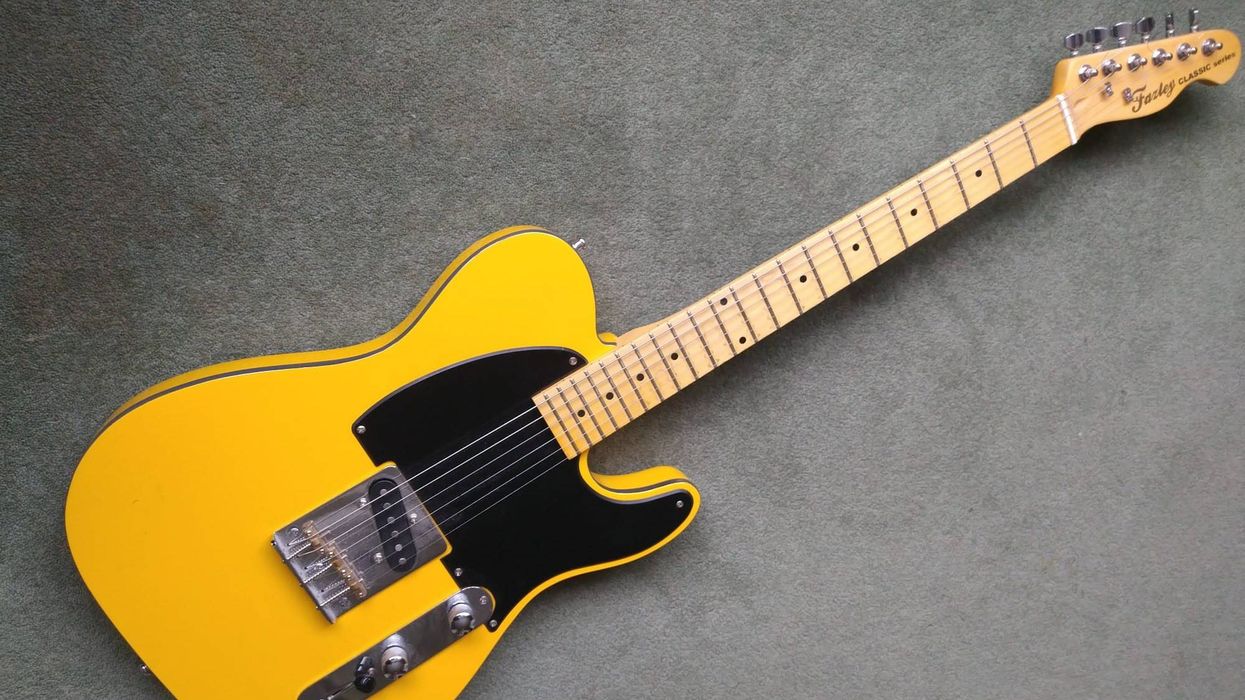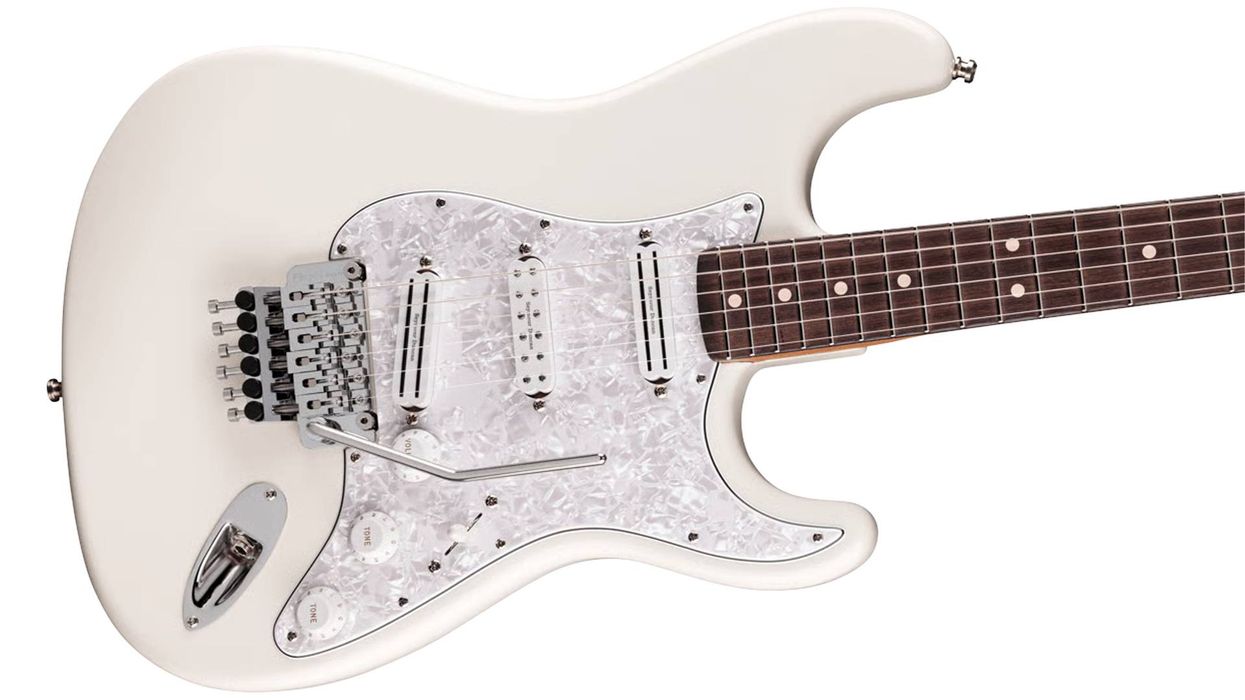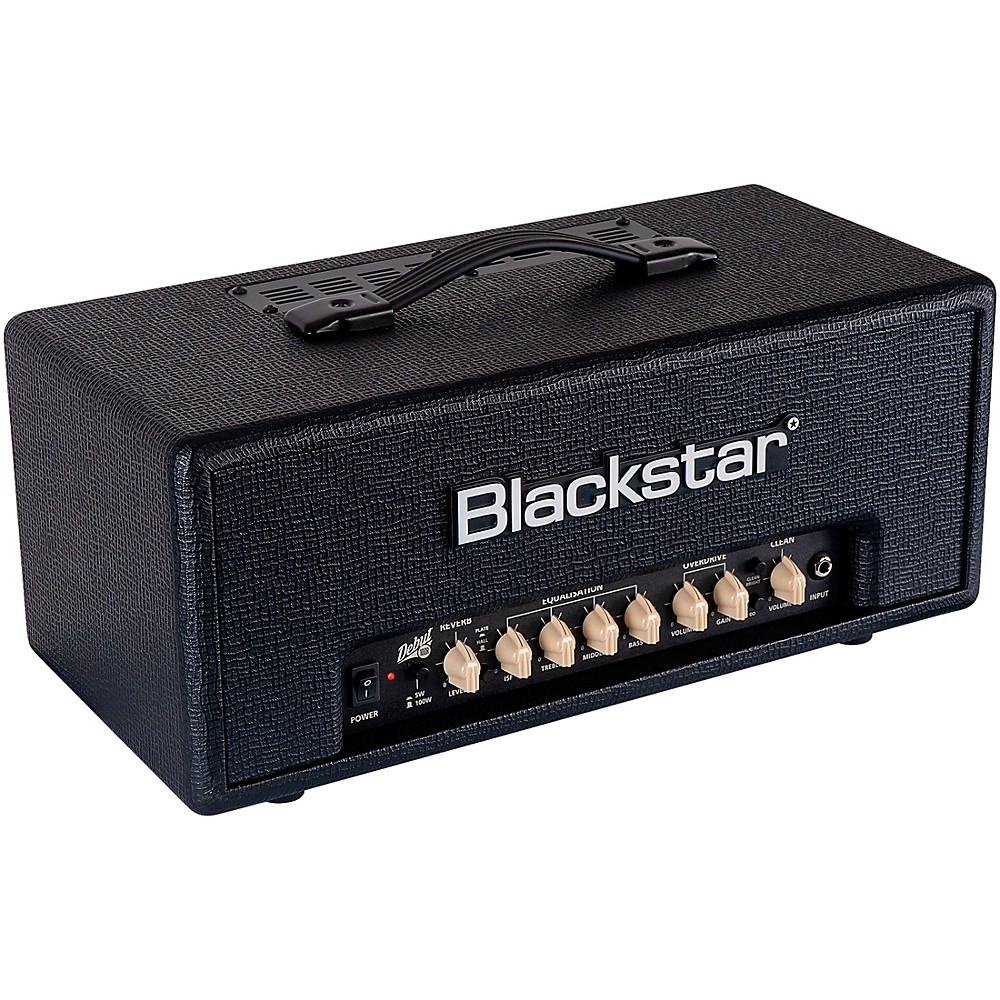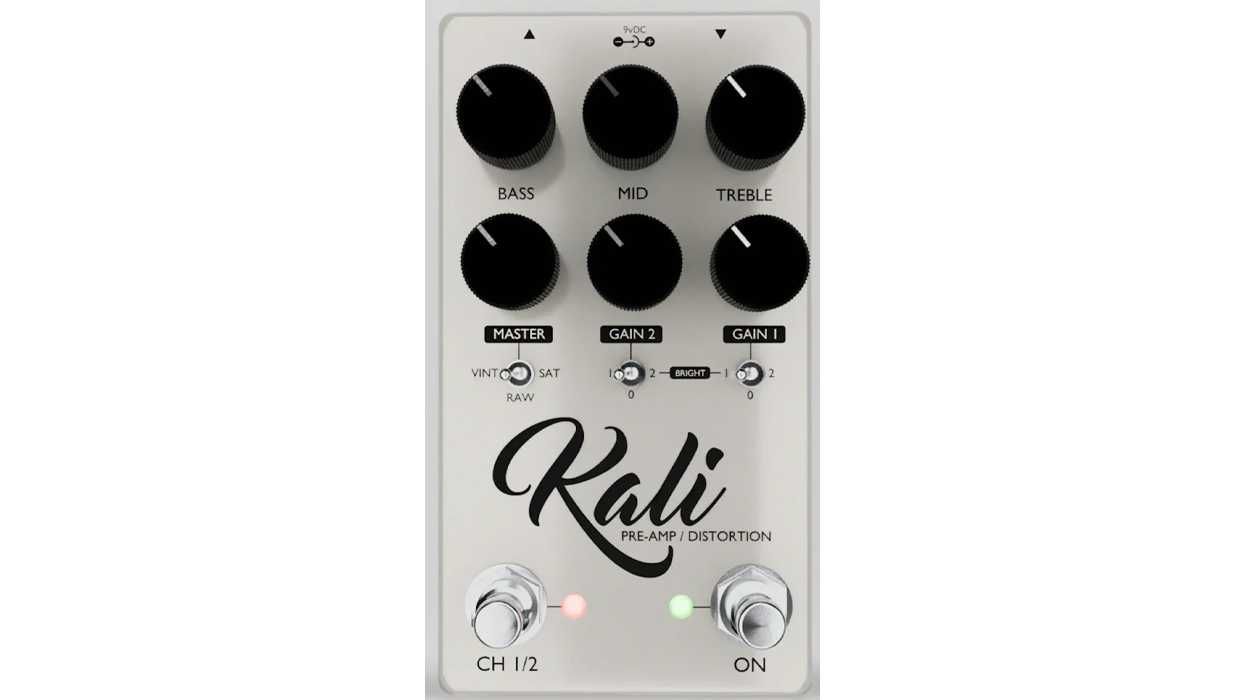Wondering how to get me to buy a pedal on looks alone? Well, Mythos’ The Fates chorus is a fine place to start. Blue Hammerite paint, chunky enclosure, Ampeg Daka Ware-style chicken head knobs—basically the stompbox equivalent of a clean, stock ’61 Ford Falcon. Yum. You know what else is tasty? The fat and creamy modulations from this unit.
Mythos makes no secret of the ways the Fates’ design is rooted in the Boss CE-2, and that’s fine by me. My friend’s CE-2 is the pedal that broke my anti-chorus bias. I’d venture that the Mythos is every bit as rich as that O.G. CE-2. But Mythos added two important features—increased depth range, and a vibrato, which, as an EHX Deluxe Memory Man devotee, delights me to no end. The Fates excels at every one of my favorite chorus applications. Paired with an electric 12-string, it can either add near-subliminal shimmy or heavy warp to fundamentals and overtones that make a room tremble and sparkle—no reverb or delay required. Classic 6-string tricks—Gilmour waves, Hendrix vibe, Marr and Pretenders sway, and Graham Coxon vibrato quease—are always just a few very smooth twists away. It’s nicely built, too, with solid switchwork, silky, stable pots, and an IC that’s well-insulated from tour abuse, heavy-footed switching, and jack snapping. A tag of $219? Sure, that’s a little steep. But I bet you’ll never need another analog chorus. Why can’t everything be this delicious and simple


















